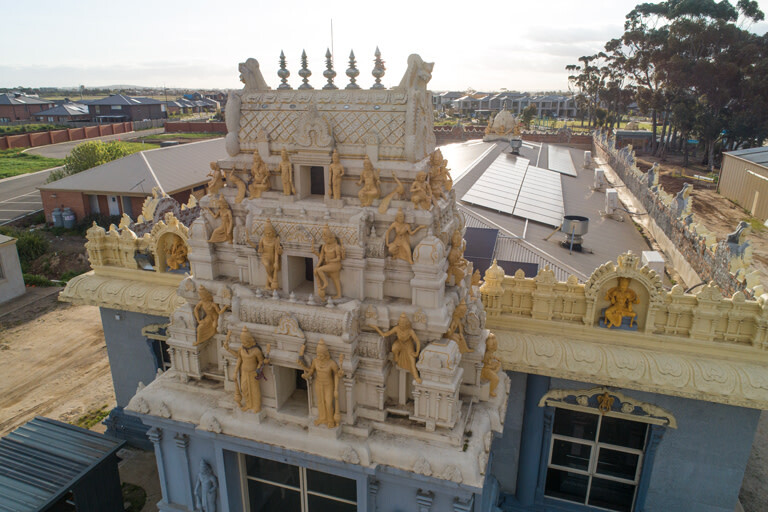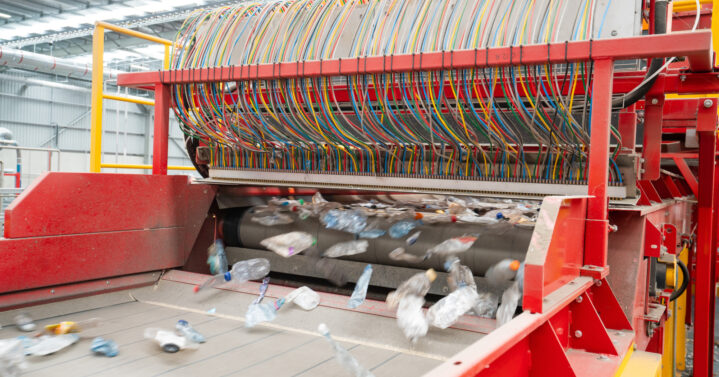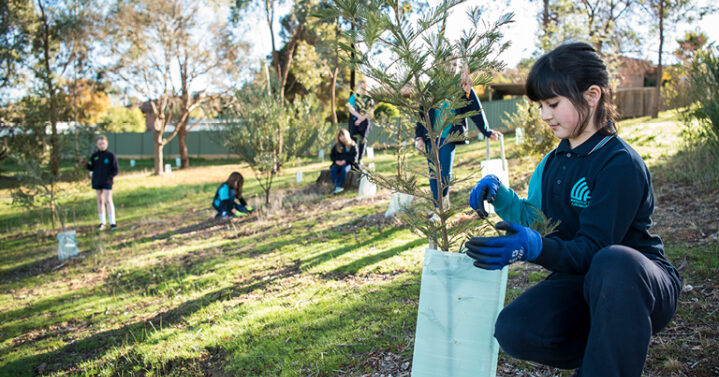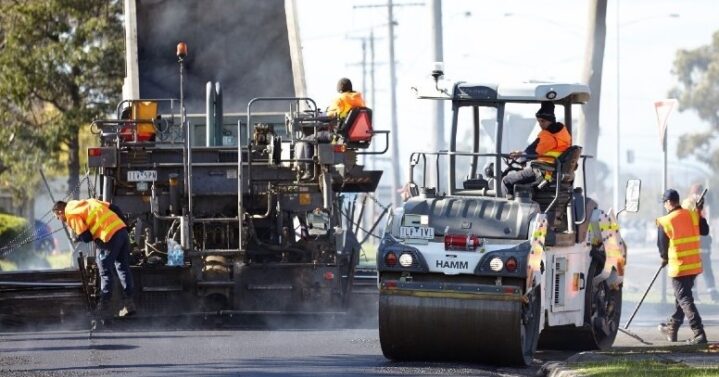SV20: From niche to mainstream
In 2025, Sustainability Victoria (SV) is celebrating 20 years of changing what’s possible. We’re looking back at some of our most memorable, exciting and transformative projects delivered on behalf of the Victorian Government.

Growing Victoria’s clean energy economy
What we did
Over 20 years, we’ve shaped how Victoria generates and consumes energy, reducing emissions by building a foundation for the adoption of renewable energy sources, and advancing energy efficiency in homes, communities, businesses and industry.
We’ve done this by turning complex ideas into practical solutions and delivering a range of programs: from rebates, grants and behaviour change initiatives, to advisory, industry partnerships and market development.
Why it matters
As a first mover, Sustainability Victoria has shifted clean energy from a niche concept to a mainstream one. Our work getting clean energy on the agenda has laid the foundation for the development of new functions within government like Solar Victoria, has helped Victoria scale up as the sector gains momentum, and has ultimately embedded clean energy in our economy.
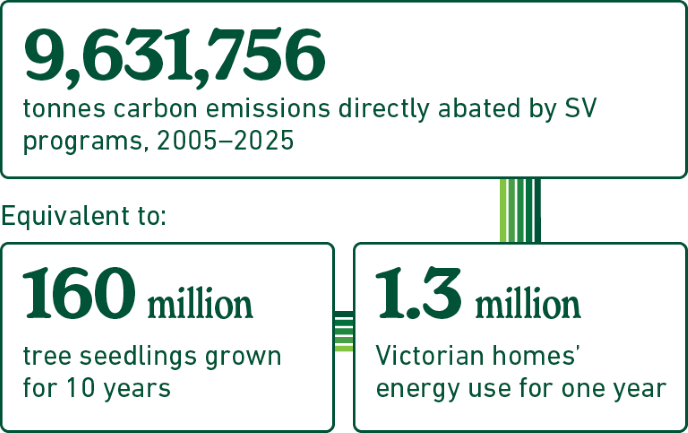
20 years shaping clean energy in Victoria
Before Sustainability Victoria did waste, we did energy – going all the way back to our predecessor organisation, the Sustainable Energy Authority (established in 1990).
In 2005, Sustainability Victoria was formed from a merger of this organisation and EcoRecycle, which was established in 1996.
With no blueprint to drive clean energy forward in Victoria, the newly formed Sustainability Victoria had to build momentum by proving what worked, earning trust, and inspiring government and industry to scale up.
The starting point in 2005 was renewable energy penetration of about 5%. Two decades on, it’s 42%.
Stan Krpan, the CEO of Solar Victoria and former CEO of Sustainability Victoria, says the ‘groundbreaking’ work of SV and its predecessors formed the ‘foundation for Victoria's solar sector, and indeed beyond Victoria more broadly.’
‘Sustainability Victoria was able to take renewables and energy efficiency mainstream in those early years, by providing rebates and investing in product development and standards.’
Over the next two decades, the organisation would go on to transform complex ideas into practical, scalable models, demonstrating how clean energy could change lives and improve our wellbeing – from retrofitting the homes of Victoria’s most vulnerable, to tapping into communities to generate their own power.
By uniting and upskilling industry, government, and communities, we laid the groundwork for long-term energy reform, accelerating Victoria towards net-zero emissions by 2045.
The transformation:
Building the confidence to scale
One of Sustainability Victoria’s biggest legacies is setting up Solar Victoria, the Victorian Government agency established in 2018 to scale up the installation of solar, battery, and hot water systems in Victorian households.
Stan Krpan, CEO of Sustainability Victoria from 2012–2019, went on to become the inaugural CEO of Solar Victoria, a role he still holds today.
‘When Sustainability Victoria was asked to develop Solar Victoria and the Solar Homes program in 2018, we were asked to do that because of our reputation and strong brand for engaging with stakeholders, engaging with industry and being trusted to deliver.’
‘There were some really challenging times along the way, but by 2019, we had a 10-year commitment, and $1.3 billion to deliver Solar Victoria.’
‘It wasn't all beer and skittles. There were some really challenging times along the way.’
Sustainability Victoria’s depth of knowledge has seen its impact extend beyond Victoria, says Luke Menzel, CEO of the national Energy Efficiency Council.
‘To make tactical interventions that will shift, you need to really engage deeply over a number of years to understand market dynamics, the opportunities, the barriers, the current state of technology, expertise and appetite in the market,’ he says.
‘Sustainability Victoria’s focus on energy efficiency created a ballast for government, in terms of deep capability. It was incredibly valuable across government and beyond. Interstate and federally, people would look to SV as a source of advice and analysis to strengthen their own thinking.’
The impact:
Cutting emissions, changing lives and saving money
The impact of Sustainability Victoria’s work shaping the clean energy sector goes far beyond government. Making Victorian homes more energy efficient – and boosting quality of life for the state’s most vulnerable – is just one example.
‘Sustainability Victoria has one of the richest data sets on energy efficiency retrofits in the country,’ explains Stan Krpan.
‘That evidence base underpinned some of the regulations and the standards that we take for granted now: four, five, six and now seven-star homes are all based off some of that work and analysis.’
Back in 2006, SV launched FirstRate5, software that allows builders and designers to generate energy ratings for homes, calculating heating and cooling requirements for new builds and major renovations. Almost 20 years on, it remains a major player in the market.
Krpan explains how Sustainability Victoria demonstrated that you could retrofit existing homes for energy efficiency at scale. ‘A huge thing, bringing sustainability into the mainstream,’ he says.
That work came to the fore in the delivery of some of Sustainability Victoria’s most celebrated projects, such as Healthy Homes.
‘Healthy Homes is something we point to internationally as just an incredibly well-conceived, robust project which really clearly articulates the profound benefit,’ Luke Menzel says.
The program ran from 2017 to 2022, providing low-cost energy efficiency upgrades to 1,000 low-income households whose occupants had chronic health or social care needs. This pilot demonstrated the financial and social benefits of energy efficiency, proving that low-cost upgrades could have a significant impact, with $10 saved in health costs for every $1 saved in energy.
‘It's hard to imagine that sort of program [Healthy Homes] running out of government departments – it’s sort of a creativity and almost an audacity of vision, a government entity pursuing a project like that.'
‘We were just astounded at some of the human stories,’ recalls Stan Krpan, then SV CEO. ‘People who hadn't turned on their fridge, a woman who had a disability in a wheelchair who couldn't go into her bathroom because it was so cold, and so for the first time was able to do that without worrying about her energy bills.’
‘Sustainability is all about people and not just the environment. To be able to bring those two things together was firstly a real privilege, but also critically important to the whole definition of a holistic environmental sustainability approach.’
-
Matt Genever:
We are with Heather out in Melton celebrating the fantastic Healthy Homes program.
A thousand Victorian families right now are benefiting from lower health care costs and lower energy costs, and they're living in warmer, more comfortable homes as a result of this fantastic program.
Heather’s had a split system installed in her house so that she can be warm throughout the winter and cool throughout summer.
That split system has replaced some older electric heaters that were really, really inefficient. And Heather really struggled to get them up to a temperature.
Heather:
The heat banks were very expensive, and with the power going up, I used to dread getting each bill, because I'd know it would be very high over the winter.
I couldn't open the doors. I had to keep the doors all shut to keep the heat in.
With the costs rising, it would have been too expensive for me to stay here.
Healthy homes have come and they've put in a new split system. So it made a difference. I was able to stay in my home here, have my friends and the neighborhood, and be able to enjoy being lovely and warm.
Matt Genever:
We set out to look at the energy efficiency of homes, but also to see what the impact on health care costs were.
It's about a $900-a-year saving for Victorians that have complex health care needs as a result of the energy upgrade to their homes.
Cold houses through winter, they're not great for your health. We knew that and we set out to prove it. And that's exactly what Healthy Homes has done.
Heather:
It's changed my life.
It means I can still stay in this house. I can afford to live here and pay my bills. And I very rarely see the doctor, only for the flu shot. And I’ve got a better quality of life. It's really good.
My upgrade has just really made life much more comfortable and pleasant for me.
The big picture:
Shaping Victoria’s waste and energy sectors
Laying the groundwork to cut waste and reduce emissions in Victoria has been a complex puzzle, demanding the expertise of a broker like Sustainability Victoria to harness first movers across communities, businesses, government and industry.
Stan Krpan recalls the cut-through of Sustainability Victoria’s TAKE2 program, Australia’s first state government-led pledge for emissions reduction. In 2018, TAKE2 pledgers accounted for about 20% of Victoria’s total emissions.
‘We mobilised so many different organisations in the TAKE2 Climate Change pledge program, a world first to bring such diverse organisations, trade unions, employer groups, businesses representing for recollection about $300 billion worth of turnover and 300,000 employees committing themselves to the government's agenda and net zero by 2050 on the steps of Parliament,’ Krpan says.
‘One of the proudest moments of my life was to be there with the minister and the Premier, making that commitment.’
Sustainability Victoria has built a groundswell of support for market transformation, says Energy Efficiency Council CEO Luke Menzel.
‘The best version of an agency like Sustainability Victoria is actually not just demonstrating to households and to businesses what's possible, it's also demonstrating to ministers, senior officials, and departmental colleagues what's possible as well, to expand their thinking about where the market could go.
‘Where [government is] effectively managing a big complex system there can be a tendency for that to be a management task as much as anything else. Versus an agency like SV, which is tasked with actually transforming the system – thinking about intervention points you can use creatively to break through the inertia and shift.’
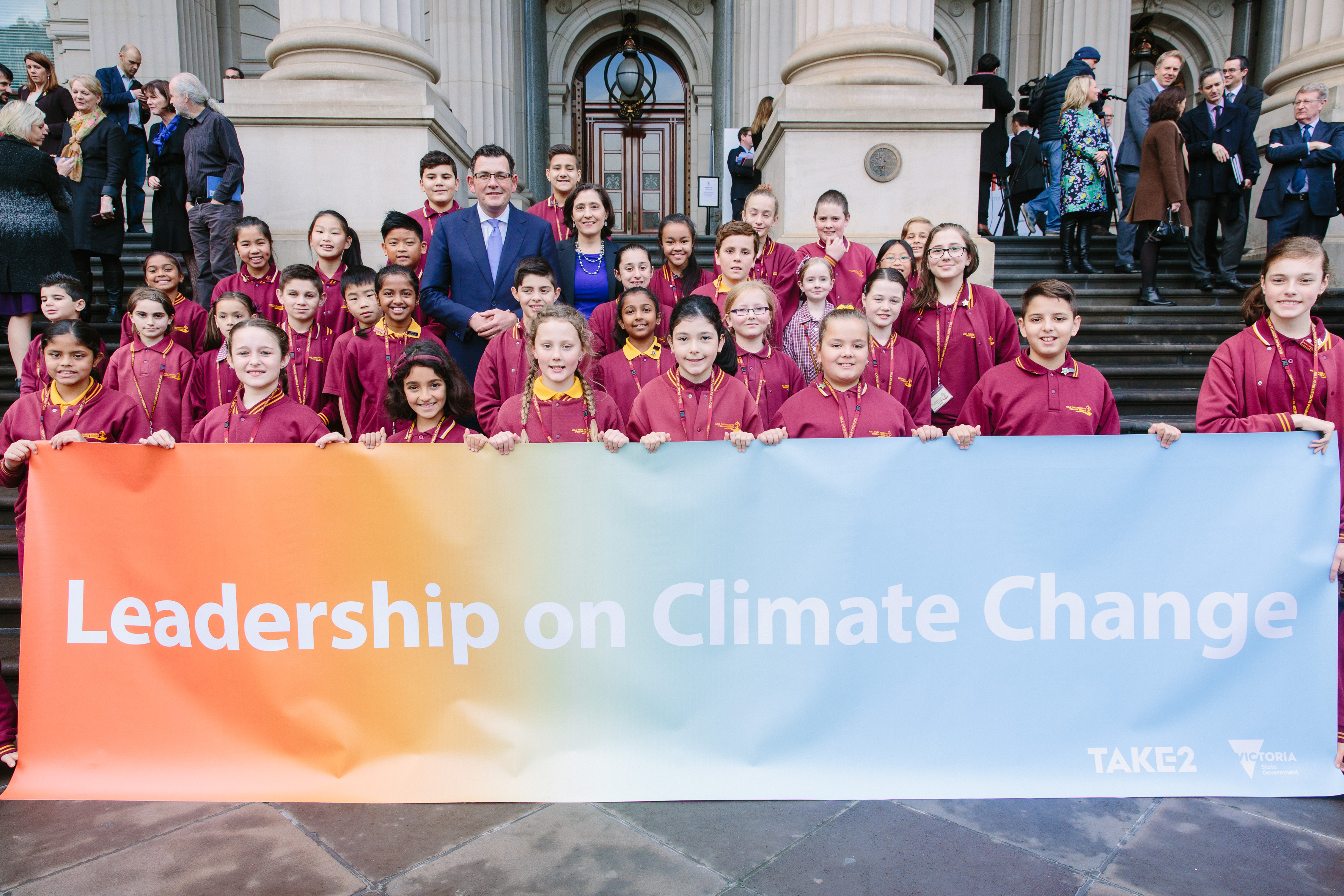 Sustainability Victoria’s TAKE2 program was officially launched on the steps of the Victorian Parliament in June 2016.
Sustainability Victoria’s TAKE2 program was officially launched on the steps of the Victorian Parliament in June 2016. The future:
Net-zero from the ground up
Where to next?
With the groundwork laid for solar uptake in Victorian households and growing renewable energy infrastructure across Victoria, unlocking the potential of communities to help Victoria reach net-zero has become the next frontier.
From 2017, the Community Power Hubs program delivered locally led renewable energy projects across Victoria, by upskilling regional collectives of not-for-profits, social enterprises, and community groups.
‘It was an innovation because it gave power to the community,’ says former SV CEO Claire Ferres Miles. ‘It showed the best of how the Victorian Government can work hand-in-glove with community. It was up to them to work out what was the best thing for their region to lead their own energy transition.’
‘I think the biggest thing about SV is it actually asks the stakeholder – whether it be industry, private companies or the community, how it can help. And so that is a big difference to government telling people what the solution is.’
Two decades on, Victorians far and wide have reaped the rewards of the clean energy sector we’ve built together.
Two million homes in Victoria now benefit from some form of energy efficiency investment, says Stan Krpan.
‘Hot water, solar PV – just mainstream things that we all now take for granted but are incredibly important to the renewable energy mix,’ he says. ‘Solar panels are the biggest single source of energy now in the national energy market.’
‘You can see [clean energy], you can feel it, and most of us benefit from it.
‘SV had a really important foundational role in that.’
-
Voiceover:
Across Victoria, more and more communities have started generating their own renewable energy locally – thanks to people power.
On behalf of the Victorian Government, Sustainability Victoria's Community Power Hubs program helped more than 40 communities bring their local energy projects to life.
More than 1.4 megawatts of solar was installed – reducing energy bills by more than $207,000 each year and benefitting thousands of Victorians.
These projects created jobs, saved money and increased energy self-reliance, proving that sometimes, the most sustainable option is to make the power where you use it.
The program reached all corners of Victoria as far as Mallacoota, where the community installed panels at their local water treatment plant, saving thousands on energy bills.
Tricia Hiley:
A number of us got together to future proof our home, which for us was reducing our environmental footprint, as well as reducing any ongoing costs that we might have into the future, as best we can.
Voiceover:
Over in Yea, the panels installed by the Hume Community Power Hub keep the lights on, the wheels turning and the kettle hot for the local Pottery Studio.
They're also estimated to save nearly $2,000 a year on bills. The large scale installations at the Bendigo Woollen Mills will offset more than 96 tonnes of greenhouse gases each year, as well as saving almost $19,000.
And the impacts won't stop there, as the savings from this project, like many others, are added to a revolving fund.
The almost $13,000 yearly savings from the new panels at the YMCA stadium in Geelong are going towards keeping the centre accessible to all.
Shona Eland:
The message from the community is that they want to participate, but that it's got to be affordable.
So, looking at a project like this that can help reduce our costs, absolutely stacks up.
Dan Cowdell:
The revolving fund is able to continue to fund other community projects into the future.
So that impact just is able to continue again and again.
Voiceover:
The Community Power Hub program is just one way we’ve put power into the hands of communities and supported them to become more sustainable.
And with 145 new ideas sparked through this program, the future of community energy looks bright.
Visit sustainability.vic.gov.au to find out more about how we're supporting communities to create their own sustainable future.
More stories from 20 years of SV
20 years of changing what’s possible
For two decades, we have led the way to a sustainable future – cutting waste, driving down emissions, and turning policy into real action across homes, communities, and businesses.
But none of it happens without you, Victoria. Your choices. Your drive. Your belief in a better way.
